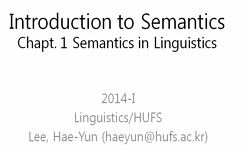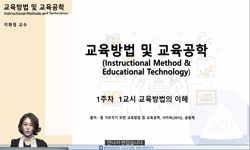현재까지 대부분의 한국어 처리 시스템에서는 복합명사 분석을 위해 많은 명사와 복합명사를 사전에 등재하여 처리하였다. 그러나 복합명사를 모두 사전에 등재하는 것은 한계가 있으므로 ...
http://chineseinput.net/에서 pinyin(병음)방식으로 중국어를 변환할 수 있습니다.
변환된 중국어를 복사하여 사용하시면 됩니다.
- 中文 을 입력하시려면 zhongwen을 입력하시고 space를누르시면됩니다.
- 北京 을 입력하시려면 beijing을 입력하시고 space를 누르시면 됩니다.

한국어 어휘의미망 U-WIN을 이용한 한국어 복합명사 의미 분석 = Semantic Analysis of Korean Compound Noun using Lexical Semantic Network(U-WIN)
한글로보기https://www.riss.kr/link?id=A99862069
- 저자
- 발행기관
- 학술지명
- 권호사항
-
발행연도
2013
-
작성언어
Korean
- 주제어
-
등재정보
KCI등재
-
자료형태
학술저널
-
수록면
833-847(15쪽)
-
KCI 피인용횟수
4
- 제공처
-
0
상세조회 -
0
다운로드
부가정보
국문 초록 (Abstract)
현재까지 대부분의 한국어 처리 시스템에서는 복합명사 분석을 위해 많은 명사와 복합명사를 사전에 등재하여 처리하였다. 그러나 복합명사를 모두 사전에 등재하는 것은 한계가 있으므로 명사 간의 관계 또는 동형이의어 명사의 의미 분석 등을 통해서 미등재 복합명사를 분석할 필요가 있다. 본 논문에서는 어휘의미망(U-WIN)을 이용한 한국어 복합명사 의미 분석 방법을 제안한다. 복합명사 의미 분석을 위해 표준국어대사전에서 추출한 27,761개의 복합명사를 대상으로 실험하였다. 실험을 위해 세종 말뭉치에서 추출한 방향별 bigram 단위의 학습데이터를 두 집합으로 구축하고, 품사 패턴과 U-WIN을 통해 학습 데이터를 확장하여 자료 부족 문제를 일부 해결한다. 그리고 미등록 복합명사를 처리를 위해 U-WIN을 통한 상위 탐색 방법을 이용해 가중치를 확보한 후 의미 분석에 사용한다. 실험한 결과 복합명사의 의미 분석은 86.20%의 정확률을 보였다. 그리고 위치 정보를 고려하지 않은 기존의 유사도 추출 기법과의 실험 결과를 비교했을 때 본 논문의 방법이 정확률에서 9.6% 더 높은 성능을 보였다.
다국어 초록 (Multilingual Abstract)
In order to analyze Korean compound nouns, most of Korean processing systems have stored nouns and compound nouns in dictionary. However, this approach is limited because most of Korean compound nouns are very productive. Therefore, it is necessary to...
In order to analyze Korean compound nouns, most of Korean processing systems have stored nouns and compound nouns in dictionary. However, this approach is limited because most of Korean compound nouns are very productive. Therefore, it is necessary to analyze the unregistered Korean compound nouns semantically using a relation of nouns and semantic analysis of homonym. In this paper, we propose a method for semantic analysis of Korean compound noun using lexical semantic network (U-WIN). 27,761 compound nouns of the Standard Korean Language Dictionary were used for experiments. For the experiments we constructed training sets of bigram units. To solve a problem of data sparseness we constructed more training set using U-WIN. The weighting methods of allocation and acquisition are used for semantic analysis of unregistered compound nouns. The result of the experiment showed a accuracy of 86.20%. The approach improved a accuracy of 9.6% than the existing approach without using the position information.
목차 (Table of Contents)
- 요약
- Abstract
- 1. 서론
- 2. 관련 연구
- 3. 복합명사 의미 분석
- 요약
- Abstract
- 1. 서론
- 2. 관련 연구
- 3. 복합명사 의미 분석
- 4. 실험 및 평가
- 5. 결론
- References
참고문헌 (Reference)
1 김민호, "한국어 어휘의미망의 의미 관계를 이용한 어의 중의성 해소" 한국정보과학회 38 (38): 554-564, 2011
2 강신재, "온톨로지 구축 및 단어 의미 중의성 해소에의 활용" 한국정보처리학회 11 (11): 491-500, 2004
3 허정, "상호정보량과 복합명사 의미사전에 기반한 동음이의어 중의성 해소" 한국정보과학회 33 (33): 1073-1089, 2006
4 Yarowsky D., "Word-Sense Disambiguation using Statistical Models of Roget's Categories Trained on Large Corpora" 1992
5 Navigli R., "Word sense disambiguation : A survey" 41 (41): 2009
6 Agirre, E., "Word Sense Disambiguation using Conceptual Density" 16-22, 1996
7 H. Lee., "Word Sense Disambiguation using Classification Information" 24 (24): 779-789, 1997
8 Resnik, P., "Using information content to evaluate semantic similarity in a taxonomy" 448-453, 1995
9 이용훈, "U-WIN을 이용한 한국어 복합명사 분해 및 의미태깅 시스템" 한국정보처리학회 19 (19): 63-76, 2012
10 Navigli R., "Structural semantic interconnections : A knowledge-based approach to word sense disambiguation" 27 (27): 1075-1088, 2005
1 김민호, "한국어 어휘의미망의 의미 관계를 이용한 어의 중의성 해소" 한국정보과학회 38 (38): 554-564, 2011
2 강신재, "온톨로지 구축 및 단어 의미 중의성 해소에의 활용" 한국정보처리학회 11 (11): 491-500, 2004
3 허정, "상호정보량과 복합명사 의미사전에 기반한 동음이의어 중의성 해소" 한국정보과학회 33 (33): 1073-1089, 2006
4 Yarowsky D., "Word-Sense Disambiguation using Statistical Models of Roget's Categories Trained on Large Corpora" 1992
5 Navigli R., "Word sense disambiguation : A survey" 41 (41): 2009
6 Agirre, E., "Word Sense Disambiguation using Conceptual Density" 16-22, 1996
7 H. Lee., "Word Sense Disambiguation using Classification Information" 24 (24): 779-789, 1997
8 Resnik, P., "Using information content to evaluate semantic similarity in a taxonomy" 448-453, 1995
9 이용훈, "U-WIN을 이용한 한국어 복합명사 분해 및 의미태깅 시스템" 한국정보처리학회 19 (19): 63-76, 2012
10 Navigli R., "Structural semantic interconnections : A knowledge-based approach to word sense disambiguation" 27 (27): 1075-1088, 2005
11 Jiang J. J., "Semantic similarity based on corpus statistics and lexical taxonomy" 11-21, 1997
12 Resnik, P., "Selectional preference and sense disambiguation" 52-57, 1997
13 Wang, T., "Refining the Notions of Depth and Density in WordNet-based Semantic Similarity Measures" 1003-1011, 2011
14 Mihalcea, R., "Pagerank on semantic networks, with application to word sense disambiguation" 1126-1132, 2004
15 Sanchez, D., "Ontology-based information content computation" 24 (24): 7718-7728, 2011
16 Seddiqui, Md. H., "Metric of intrinsic information content for measuring semantic similarity in an ontology" 89-96, 2010
17 Galley, M., "Improving word sense disambiguation in lexical chaining" 1486-1488, 2003
18 Banerjee. S., "Extended gloss overlaps as a measure of semantic relatedness" 805-810, 2003
19 Rada, R., "Development and application of a metric on semantic nets" 19 (19): 17-30, 1989
20 H. S. Choi, "Construction and Application of Large- scale Korean User-Word Intelligent Network"
21 Lesk., "Automatic sense disambiguation using machine readable dictionaries : How to tell a pine cone from an ice cream cone" 24 (24): 24-26, 1986
22 Rosso, P., "Automatic Noun Sense Disambiguation" 273-276, 2003
23 Agirre, E., "A proposal for word sense disambiguation using conceptual distance" 1995
24 Buscaldi, D., "A conceptual density-based approach for the disambiguation of toponyms" 22 (22): 301-313, 2008
25 Meng, L., "A Review of Semantic Similarity Measures in WordNet" 6 (6): 1-12, 2013
26 Meng, L., "A New Model of Information Content Based on Concept's Topology for measuring Semantic Similarity in WordNet" 5 (5): 81-94, 2012
동일학술지(권/호) 다른 논문
-
- 한국정보과학회
- 신봉기(Bong-Kee Sin)
- 2013
- KCI등재
-
실시간 소프트웨어 모델에서 만족된 속성을 코드에서 확인하는 체계적 기법 및 사례연구
- 한국정보과학회
- 홍광의(Gwangui Hong)
- 2013
- KCI등재
-
- 한국정보과학회
- 김태연(Tae-Yeon Kim)
- 2013
- KCI등재
-
비 반복적 에너지 최소화를 통한 빠른 움직임 예측 알고리즘
- 한국정보과학회
- 최두섭(Dooseop Choi)
- 2013
- KCI등재
분석정보
인용정보 인용지수 설명보기
학술지 이력
| 연월일 | 이력구분 | 이력상세 | 등재구분 |
|---|---|---|---|
| 2014-09-01 | 평가 | 학술지 통합(기타) | |
| 2013-04-26 | 학술지명변경 | 한글명 : 정보과학회논문지 : 소프트웨어 및 응용</br>외국어명 : Journal of KIISE : Software and Applications |  |
| 2011-01-01 | 평가 | 등재학술지 유지(등재유지) |  |
| 2009-01-01 | 평가 | 등재학술지 유지(등재유지) |  |
| 2008-10-17 | 학술지명변경 | 한글명 : 정보과학회논문지 : 소프트웨어 및 응용</br>외국어명 : Journal of KISS : Software and Applications |  |
| 2007-01-01 | 평가 | 등재학술지 유지(등재유지) |  |
| 2005-01-01 | 평가 | 등재학술지 유지(등재유지) |  |
| 2002-01-01 | 평가 | 등재학술지 선정(등재후보2차) |  |




 ScienceON
ScienceON DBpia
DBpia






